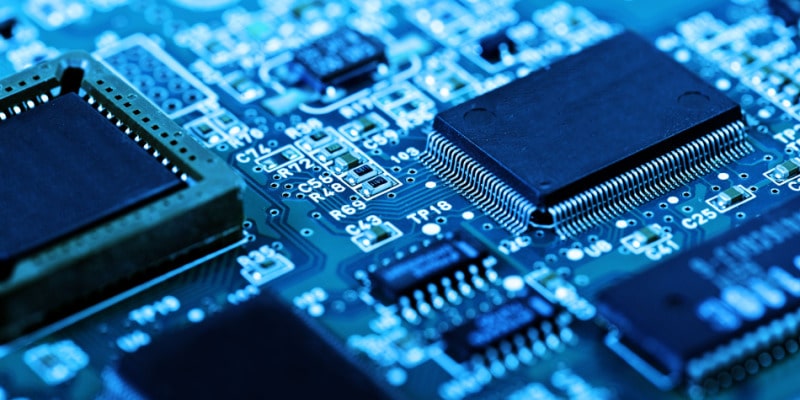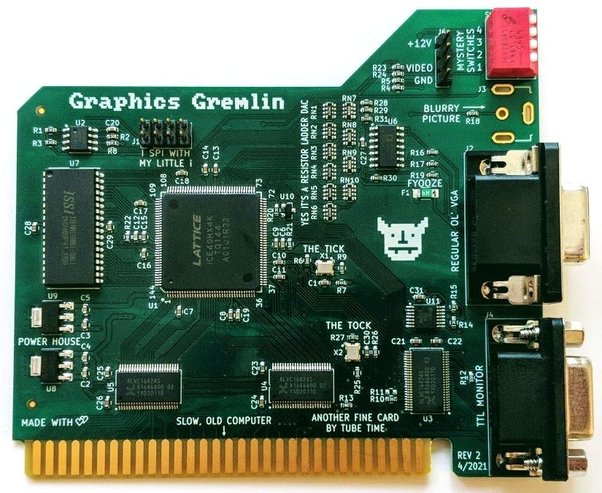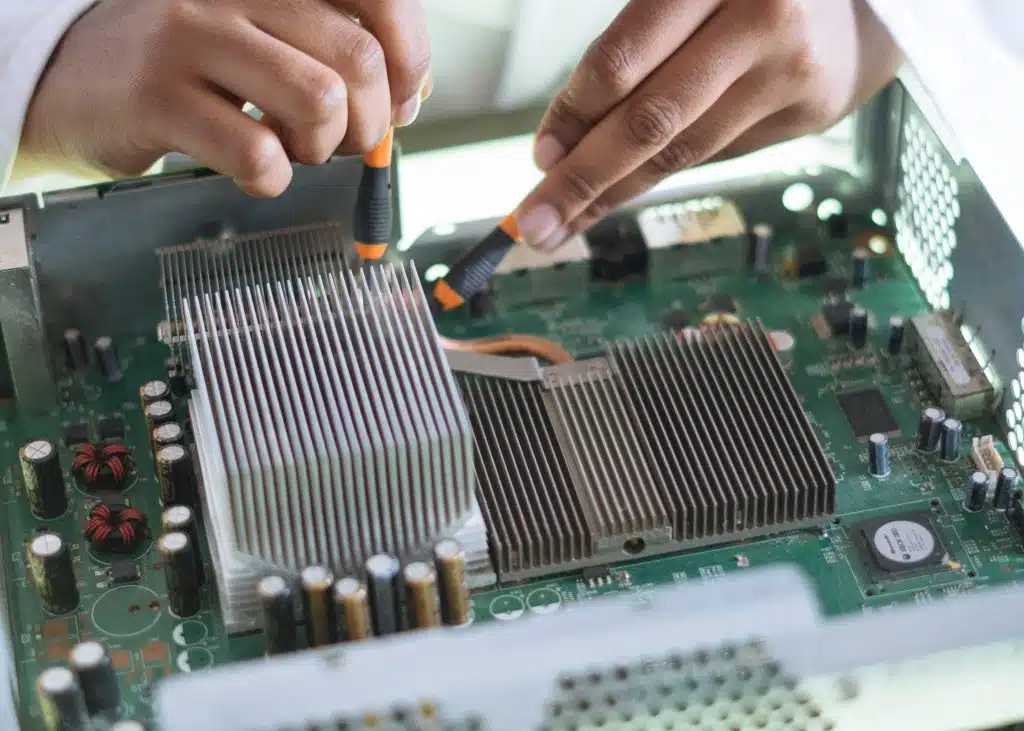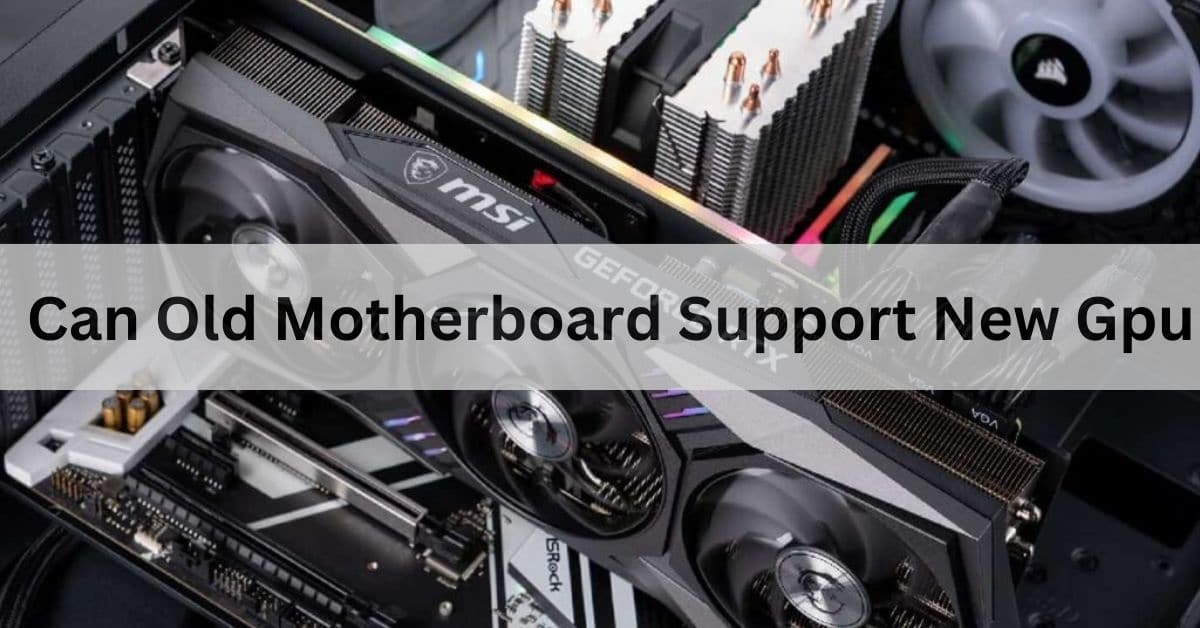I recently upgraded to a new GPU but kept my old motherboard. At first, I was worried about compatibility issues, but with a few tweaks in the BIOS, everything worked smoothly. It turns out that even older motherboards can handle newer GPUs, as long as you check a few key factors!
Yes, an old motherboard can support a new GPU, but it depends on factors like the motherboard’s PCIe slot, power supply, and BIOS. Make sure they meet the requirements for the new GPU to work properly.
In this article, we will discuss all about “ Can Old Motherboard Support New Gpu”.
Table of Contents
What is a Motherboard?

A motherboard is the main circuit board inside a computer. It connects all the parts, such as the processor, memory, and storage, allowing them to work together. It’s essential for the computer’s operation.
Read More: Are Asrock Motherboards Good – The Ultimate Guide 2024!
Can Any Motherboard Support Any GPU?
Not every motherboard can support any GPU. Compatibility depends on factors like the PCIe slot, power supply, and physical space in your case. Always check your motherboard’s specifications and the GPU requirements before upgrading.
What is a GPU?
A GPU, or Graphics Processing Unit, is a computer part that helps display images, videos, and games. It processes graphics faster than a regular CPU, making it important for gaming, video editing, and visual tasks.
Considerations For Upgrading GPU:
When upgrading a GPU, make sure your power supply can handle the new card, and check if your motherboard has the right slot. Also, ensure your computer case has enough space for the new GPU.
GPU Compatibility with Old Motherboards:
Old motherboards can support new GPUs if they have the right PCIe slot and enough power. Make sure to check the power supply and BIOS settings to avoid any problems when connecting the new GPU.
Compatibility Factors:
Socket Type:
The socket type is the part of the motherboard that connects the CPU. Different CPUs need specific socket types, so it’s important to match your CPU with the right socket on the motherboard for proper function.
Power Supply Requirements:
Power supply requirements for a new GPU include enough wattage to support the graphics card. Check the GPU’s specifications for recommended power and ensure your power supply has the right connectors for the best performance.
Physical Space:
When adding a new GPU, make sure your case has enough physical space. Check if the GPU fits inside and that there is room for proper airflow to keep it cool while running.
IOS Compatibility:
To check iOS compatibility, make sure your device runs the latest iOS version. New apps often need recent updates, so always update your device to enjoy the best features and performance without issues.
RAM Compatibility:
RAM compatibility is important when upgrading your computer. Make sure the RAM type, speed, and capacity match your motherboard’s specifications. Always check the motherboard manual for supported RAM to avoid any issues.
Potential Issues with GPU-Motherboard Compatibility:
PCIe Slot Compatibility:
PCIe slot compatibility is important for adding a new GPU. Check if your motherboard has the right PCIe slot version. Most new GPUs work with older slots, but performance may vary. Always verify before upgrading.
Physical Size Restrictions:
Physical size restrictions refer to the space inside your computer case. Make sure the new GPU fits without blocking other parts. Check the length, height, and width of both the GPU and your case before buying.
BIOS Compatibility:
BIOS compatibility is important when using a new GPU with an old motherboard. Check if your BIOS version supports the GPU. Sometimes, updating the BIOS can solve issues and help the new hardware work properly.
Driver Support:
Driver support is important for using a new GPU with an old motherboard. You need to check if the motherboard can run the latest drivers. This ensures the GPU works well and performs as expected.
Can you put a new GPU in an old motherboard?

Yes, you can put a new GPU in an old motherboard if it has the right slot and power supply. Check the compatibility before upgrading to ensure everything works well together.
Read More: What Graphics Cards Are Compatible With My Motherboard – The Ultimate Guide 2024!
Will a RTX 3060 work on an old motherboard?
Yes, an RTX 3060 can work on an old motherboard, but make sure your motherboard has the right PCIe slot and enough power supply. Check compatibility before upgrading to avoid issues.
How do you know if my motherboard can handle a new GPU?
To know if your motherboard can handle a new GPU, check the motherboard’s PCIe slot type, power supply requirements, and size. You can find this information in the motherboard’s manual or on the manufacturer’s website.
Do I need a new mobo for new GPU?
You may not need a new motherboard for a new GPU. Just check if your current motherboard has the right slot and power supply to support the new graphics card. Compatibility is key!
Will old motherboard work with new GPU?
Yes, an old motherboard can work with a new GPU if it has the right slot and power supply. Check for compatibility before buying to ensure everything fits and works well together.
Running new video card with older motherboard?
Running a new video card with an older motherboard is possible, but check for compatibility first. Make sure the motherboard has the right slots and power supply to support the new card.
Will my old old graphics card work with a new motherboard?
Yes, your old graphics card can work with a new motherboard if the slots match. Make sure the new motherboard has the right type of slot for your graphics card. Check the power supply and compatibility for best performance.
Can my old motherboard support new gpu?
Yes, your old motherboard can support a new GPU, but it depends on the motherboard’s age and specifications. Check if it has the right slot, enough power supply, and any BIOS updates to ensure compatibility with the new GPU.
Old motherboard not detecting new GPU?
If your old motherboard does not detect the new GPU, check the power connections and make sure the GPU is seated correctly. Also, update the motherboard BIOS and ensure the GPU is compatible with your motherboard for proper detection.
Video Card Recommendation for Old MotherBoard?
When choosing a video card for an old motherboard, check compatibility first. Look for options like the GTX 1650 or RX 550. These cards often work well with older systems and provide good performance for gaming and everyday tasks.
Will you need a new motherboard for RTX 4000 series?
You may need a new motherboard for the RTX 4000 series. Check your current motherboard’s compatibility with the GPU’s power and connection requirements. If it doesn’t support them, getting a new motherboard will ensure better performance and stability.
Can old motherboard support new gpu for gaming?
Yes, an old motherboard can support a new GPU for gaming, but it depends on compatibility. Check if the motherboard has the right slots and enough power supply. Always confirm that your CPU can keep up with the new GPU for best performance.
Can I use old motherboard for gaming?
Yes, you can use an old motherboard for gaming, but performance may be limited. Check the motherboard’s compatibility with newer components, like RAM and a graphics card, to ensure a good gaming experience. Upgrading some parts can help improve performance.
Old motherboards + new GPUs:
Old motherboards can sometimes support new GPUs, but it depends on their age and specifications. Check the motherboard’s slot type and power supply to ensure compatibility. With some adjustments, you might successfully use a new GPU with an older board.
Using an old graphics card on a new mother board?

You can use an old graphics card on a new motherboard if the card fits and the motherboard has the right slots. Just make sure the drivers are updated for the best performance. Compatibility is key for a smooth experience.
Read More: Is My Motherboard Compatible With GPU – Quick Compatibility Guide!
FAQs:
1. Can you put a new GPU in an old motherboard?
Yes, you can put a new GPU in an old motherboard if it has the right slot and power supply. Check the compatibility before upgrading.
2. Will a RTX 3060 work on an old motherboard?
Yes, an RTX 3060 can work on an old motherboard, but make sure it has the right PCIe slot and enough power.
3. How do you know if your motherboard can handle a new GPU?
Check the motherboard’s PCIe slot type, power supply requirements, and size. This info is in the motherboard’s manual or on the manufacturer’s website.
4. Do I need a new motherboard for a new GPU?
You may not need a new motherboard for a new GPU. Just check if your current motherboard has the right slot and power supply.
5. Will my old graphics card work with a new motherboard?
Yes, your old graphics card can work with a new motherboard if the slots match. Make sure to check the power supply.
Conclusion:
Upgrading to a new GPU while keeping an old motherboard is possible. Just ensure your motherboard has the right PCIe slot, enough power supply, and proper BIOS settings. With these checks, you can enjoy improved graphics without needing a complete system upgrade. Always research compatibility to avoid issues and maximize performance.
